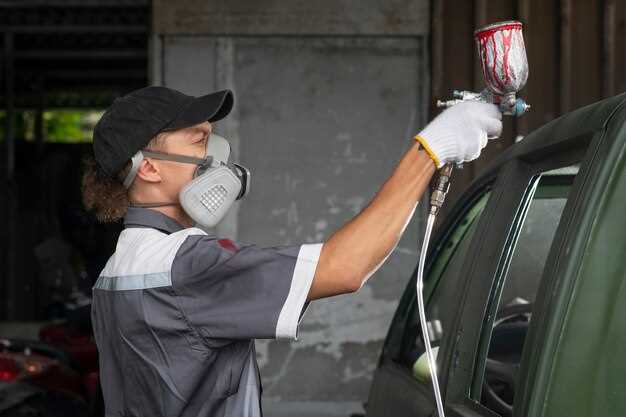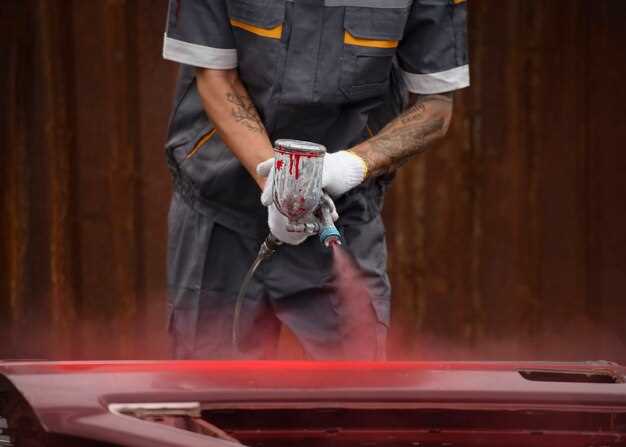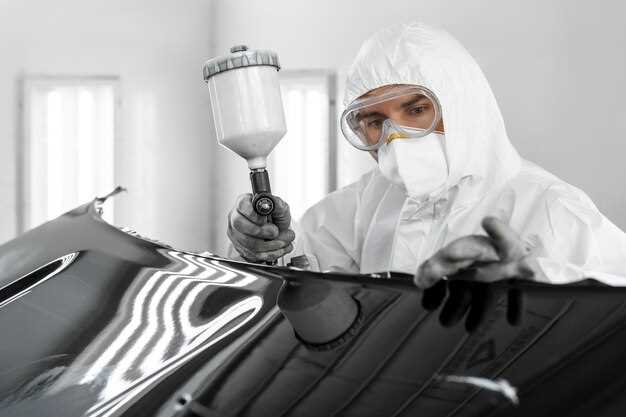
Automotive paint serves both aesthetic and protective functions, yet it is often subject to various issues that can significantly affect its appearance and durability. Understanding these common problems allows car owners to take proactive measures to protect their vehicle’s finish. From scratches and chips to oxidation and fading, the challenges of maintaining a flawless paint job are numerous.
One prevalent issue is scratches, which can occur due to everyday activities such as car washing or accidental contact with other objects. These imperfections not only detract from the car’s overall look but can also expose the underlying metal to rust. Fortunately, there are effective solutions, ranging from DIY touch-up kits to professional refinishing services.
Another significant concern is oxidation, which often results from prolonged exposure to the sun’s ultraviolet rays. This phenomenon can lead to a dull and discolored appearance. In many cases, regular waxing and the application of protective coatings can help mitigate this problem and preserve the paint’s luster for years to come.
Additionally, paint mismatching can occur during repairs or touch-ups, leading to an unsightly difference in tone compared to the original finish. By understanding the color blend and using professional color-matching techniques, car owners can ensure a seamless repair that maintains the vehicle’s aesthetic integrity.
In this article, we will explore these common auto paint problems in detail, providing actionable solutions and maintenance tips to help you manage and prevent them effectively.
Dealing with Scratches and Chips on Your Vehicle

Scratches and chips on your vehicle’s paintwork can occur due to various factors such as road debris, branches, or even minor accidents. Addressing these issues promptly is essential to prevent rust and further paint damage.
Identify the Severity of Damage: Before beginning repairs, assess the depth of the scratches and chips. Surface scratches that haven’t penetrated the clear coat can often be polished out. However, deeper scratches that reach the primer or metal require a different approach.
Surface Scratches: For light scratches, a paint polishing compound can be effective. Apply a small amount of the compound to a microfiber cloth and rub it gently over the scratch in circular motions. This method works by smoothing out the clear coat, making the scratch less visible.
Deeper Scratches: If the scratch is deeper, you’ll need to touch it up with paint. First, clean the area with soap and water to remove any debris. Once dry, use a fine-grit sandpaper to lightly sand the scratched area, ensuring a smooth surface for the paint to adhere. Next, apply a touch-up paint that matches your vehicle’s color. You can find paint codes in the owner’s manual or on the vehicle itself.
Chips: For chips, start by cleaning the area thoroughly. Use a small brush or a toothpick to apply touch-up paint into the chip, ensuring it’s filled properly. Once the paint dries, you can carefully sand it down to match the surrounding surface and apply a clear coat to protect the repair.
Final Touches: After addressing scratches and chips, conduct a final polish on the entire area. This step enhances the shine and provides a more uniform appearance. Make sure to apply a protective wax or sealant after the repair to guard against future damage.
Regular maintenance and prompt attention to scratches and chips will help maintain your vehicle’s appearance and value. Keep your car looking its best by monitoring paint condition and performing repairs as needed.
Identifying and Fixing Paint Fade and Discoloration

Paint fade and discoloration are common issues that can affect the appearance and value of your vehicle. Identifying these problems early can help prevent further damage and ensure a more successful repair process.
Signs of Paint Fade: One of the first indicators of paint fade is a noticeable change in color intensity. The paint may appear dull, washed out, or less vibrant than it was originally. Inspect the vehicle under natural light to detect uneven coloration, which often indicates that certain areas have faded more than others. Additionally, check for excessive oxidation, characterized by a chalky texture when you rub your hand over the surface.
Causes of Paint Discoloration: Several factors contribute to paint fading and discoloration. Prolonged exposure to sunlight can degrade the clear coat and underlying paint, particularly on unprotected surfaces. Environmental pollutants, bird droppings, and tree sap can also lead to chemical reactions that alter the paint’s color. Moreover, improper washing techniques, such as using abrasive materials or harsh chemicals, can exacerbate the issue.
Fixing Paint Fade: To restore faded paint, start by cleaning the surface with a pH-balanced car wash soap to remove any dirt or contaminants. Next, consider using a polishing compound to buff out minor fade marks. Apply the compound with a soft cloth or a dual-action polisher in a circular motion. This process can help restore some of the original luster and remove surface imperfections.
If the fading is more severe, a professional detailing or repainting may be required. At this stage, a body shop can evaluate whether a full paint correction or a respray is the best option. They will typically start by sanding the affected area, applying a suitable primer, and then repainting with high-quality automotive paint to ensure durability and a good color match.
Preventing Future Fade: To prolong the life of your vehicle’s paint, consider applying a high-quality wax or sealant regularly, which will provide a protective barrier against UV rays and contaminants. Additionally, parking in shaded areas or using a car cover can significantly reduce exposure to sunlight. Regular washing and detailing will also help maintain the paint’s integrity and appearance over time.
Resolving Issues with Paint Runs and Drips
Paint runs and drips are common issues that occur during the auto painting process, often resulting in an unsightly finish. To address these problems effectively, it is essential to follow a structured approach.
Initially, it is crucial to identify the cause of paint runs and drips. These imperfections can arise from several factors, including applying too much paint at once, using the incorrect spray technique, or painting in inappropriate environmental conditions, such as high humidity or low temperatures. Understanding these triggers can help prevent future occurrences.
If paint runs have already formed, the first step in resolving the issue is to allow the paint to fully cure. Trying to fix runs before the paint hardens can lead to further damage. Once cured, evaluate the severity of the runs. Light runs may be smoothed over with fine-grit sandpaper, while deeper drips may require more extensive repair.
For minor runs, gently sand the area using 1500-grit sandpaper, taking care to blend the edges with the surrounding paint. After sanding, clean the surface thoroughly to remove any dust or debris. Follow up with a polishing compound to restore the shine of the affected area.
For more pronounced drips, it may be necessary to use a paint razor or scraper. Carefully scrape away the excess paint without damaging the underlying layer. After scraping, sand the area smooth and clean it before applying additional paint if needed. A light mist of paint can help blend the repaired spot with the surrounding finish.
Preventing paint runs and drips in the future is equally important. Ensure you use the appropriate paint viscosity and reduce the paint load while spraying. Maintain a consistent distance from the surface and keep the spray gun at the correct angle to achieve an even coat. Proper ventilation and climate control can also enhance paint application quality.
By addressing paint runs and drips promptly and effectively, car owners can maintain a pristine finish and enjoy the longevity of their vehicle’s paint job.

